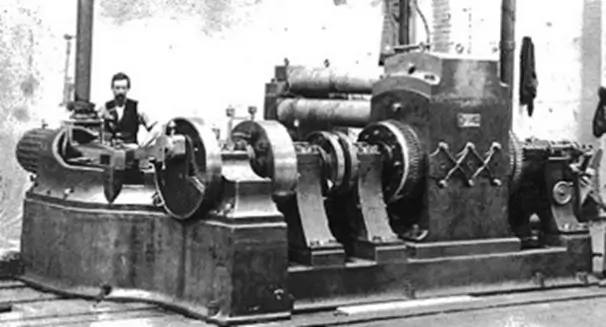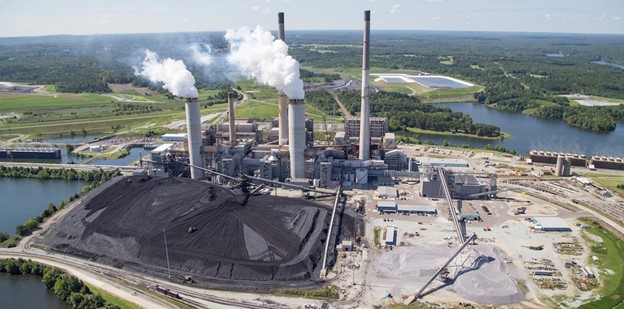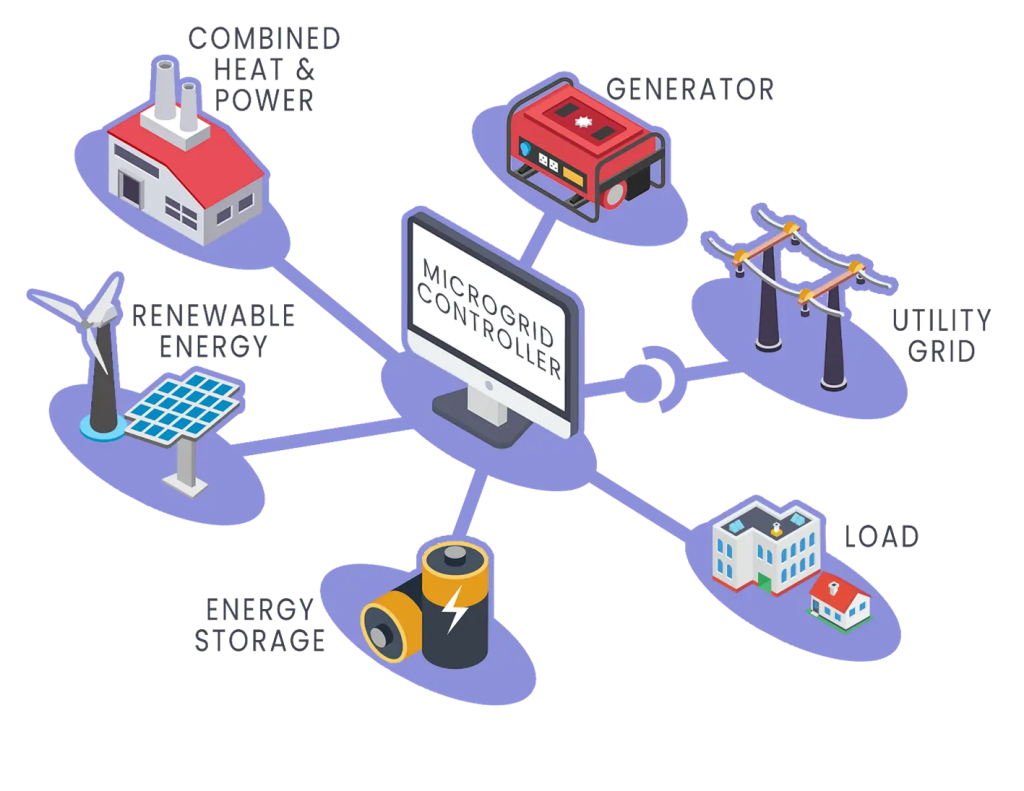
In my previous blog, I described District Energy and explored some of its uses. Now I’m going to look at the microgrid and modern power grid’s District Energy roots, and how the shift to green energy is bringing it back.
Edison’s Pearl Street Station supplied electricity to 500 customers. Four coal-fired boilers powered six dynamos, early versions of the modern electric generator. The dynamos (Figure 1) consisted of a generator driven by steam engines (read all about Pearl Street Station here).

In addition to generating electricity, Pearl Street Station was the first “Cogeneration Plant,” using excess heat energy for nearby buildings.
Pearl Street Station introduced the world to distributed electrical power. However, capacity was a disadvantage of Edison’s design. His dynamos were rated at 100 kW each, but only capable of producing 250 Volts DC. Direct Current is limited in range; Pearl Street Station could only power a 1-square mile area.
The growth of electrical distribution fueled a shift to Alternating Current (AC). Hundreds of stations like Pearl Street were installed worldwide over the late 1800s. The limits of low voltage DCs would soon spell the end of these plants.
In 1895, Folsom Powerhouse in California began supplying high-voltage AC power to the city of Sacramento. Power was transmitted over a 22-mile distribution system, dwarfing Pear Street Station. Though it was not the first “commercial” AC generating station, the Folsom plant is considered a milestone for the electrical grid we know today.
Over time, the need to transmit great distances outgrew smaller plants such as Folsom. The answer was high capacity and high voltage. This meant huge machines and tons of energy. The answer? COAL.
By the time Pearl Street Station was opened, coal was a popular form of energy. It was the efficiency of boilers and steam plants in the late 1800s that limited its use. Between 1900 and 1930, improvements in plant design had raised capacity to the 300 MW level[1].
Over the next century, huge coal power plants will dominate the power industry. The microgrids serving cities would give way to a modern electric grid that powers nearly 90% of the world’s population.

Burning coal releases hazardous substances into the atmosphere like sulfur dioxide and oxides of nitrogen. These products contribute to the greenhouse effect and acid rain. Over the last half a century, global attention led to improvements in coal plant emissions. Even so, coal has lost its foothold as the power standard.
The push to replace fossil fuels creates two issues for the modern grid. As Rick Cragg discusses in his blog, switching to electric vehicles places more load on the grid. In a previous blog, I talked about the effect of renewable energy on the grid. As of today, renewable energy is limited by total capacity and ability to handle load changes.
The answer may go back to Pearl Street Station. Now, the microgrid (Figure 3) is gaining traction. A microgrid is a local energy grid that can operate independently of the primary grid, using multiple power sources.
Micro-grids benefit from using multiple energy sources, especially those suitable to that site. Since a microgrid is designed to serve a specific area, it can efficiently use smaller sources. It can be customized to the resources and problems of that area. Since it can be removed from the main grid, it is less affected by damage or outages.

For this example, I’ll place our microgrid in a desert. During the day, solar panels on businesses and in solar fields, combined with wind turbines, produce enough electricity. Any extra electricity is stored in an energy storage system.
As the sun goes down and the wind dies off, power from these sources drops. The energy storage system will supply power to the microgrid during this time. In my desert paradise, I know power use will spike as people come home. They lower the A/C to cool the house, cook meals, wash clothes, and turn on all their lights. I know this peak time is between 6 PM and 10 PM.
At this point, wind and solar output are close to zero, and the energy storage system will not keep up. So, at 5:45 pm, I start my gas-fired combustion turbine (CT). The CT will produce more than enough power to support the demand on my microgrid. The excess power charges my energy storage system. The unit runs until people go to bed, and then I shut it down.
To start, a CT has three key benefits over a Boiler:
My micro-grid mainly uses local solar, since I live in the desert. I don’t transmit this power far, so I don’t lose as much. I know my local demand and my renewable output, so I can time when I run the CTs. In the end, less fuel burned equals less emissions.
Now I’ll move my grid to rural northeast North Carolina. The nearest source of power is Surry Nuclear Power Plant, roughly 100 miles North. A hurricane has just traveled up the east coast. It destroyed miles of power lines, and flooded part of Surry plant. Since my town is much smaller than nearby cities, we could be without power for days or weeks.
Enter the micro-grid. Since we are near the coast and live on flat ground, I use a large wind farm. The constant breeze produces power 24 hours a day. Since sunshine is not constant, I have little solar. Instead, I have a three-unit Combined Cycle plant.
I run the Combined Cycle Plant (steam side) during off-peak hours, providing heat and cooling for our hospital and local college while making electricity that powers the microgrid. I only run the CTs as needed during peak generating hours to supplement the wind farm.
Since my power sources are in my district, I have to repair less infrastructure. I can use the CTs to make up for damaged wind turbines. This means I can restore power sooner, with fewer outside resources. People are without power for a shorter period.
As we look for ways to produce more electricity with less effect on the environment. We have to look beyond our current system. Surprisingly, the answer to the future just might be found in the past. To learn more, check us out at www.fossilconsulting.com.
[1] https://www.powermag.com/history-of-power-the-evolution-of-the-electric-generation-industry/